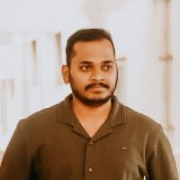I worked on multiple projects using Splunk ITSI for log monitoring, including monitoring mobile data usage for a telecom company, working with an insurance company and a retail application, and monitoring payment applications for a bank.
The integration with Splunk ITSI allowed us to monitor and track issues through alerts. This integration also reduces the Mean Time to Identify as the team is quickly made aware of problems through the ITSM tool, and respective incidents are raised to the application team. Depending on the issue's type, we can prioritize the incident, even giving it a P1 priority. With this, the team is made aware, and since we track our issues in ServiceNow, related incidents can be deployed, which also helps reduce the Mean Time to Resolve. The application team then knows what actions to take.
Event management utilizes event correlation and event aggregation instead of generating numerous alerts that cause panic within the team because multiple areas might be affected by a single issue. This can be achieved through Splunk's native capabilities, like notable event aggregation policies and episode reviews for ITSM, or by utilizing third-party tools such as Netcool. By employing event management tools like Netcool and then sending aggregated incidents to ServiceNow or using ServiceNow's item model for implementation, the number of alerts is reduced, and the troubleshooting team receives relevant information instead of overloading. This approach helps mitigate panic and provides the team with the resources to effectively address issues.
End-to-end visibility for application monitoring in our use case required us to consider all involved components. We addressed this by creating hierarchical dashboards. This approach provided everyone, from business stakeholders to operations, with visibility into application health through relevant metrics. Business stakeholders, for instance, focus on high-level metrics like application health, user experience, revenue, and performance rather than technical details like CPU usage. Therefore, we tailored the dashboard hierarchy for different roles: business executives, operation leads, project managers, and operations staff. The operations dashboard provided end-to-end visibility by configuring all components of the application's functioning. Leveraging the familiar network architecture, we utilized the same topology to present metrics, creating a comfortable and easily understandable dashboard layout. By plotting all entities with their availability and performance metrics, we achieved comprehensive end-to-end visibility.
We have set up the environment correctly for the predictive analytics, and our metrics are flowing continuously. We have the required data, so we can configure at least 30 minutes of lead time to predict the metrics and their thresholds for potential impact. I can set this up, but I only had the opportunity to work on the project until anomaly detection. Predictive analytics was not a requirement, so I did not implement it. However, I understand it entirely and have explored and learned about it in their documentation.
For our telecom project, we focused on promotions as a use case. We aimed to identify the most popular promotions among users, especially during festivals and special occasions. Analyzing business metrics revealed that Promo Code 350 was the most frequently used, generating significant revenue. We presented these findings to the business team, showcasing how different promotions performed during various events. This information empowered them to design more effective offers and strategies, ultimately improving the customer experience. The business team appreciated our contribution, recognizing the value of data-driven insights in shaping their marketing efforts.
Splunk ITSI is a tool that helps our clients streamline their incident management. By integrating Splunk ITSI with ServiceNow and NetCool, we can reduce the burden of keeping up with the number of incidents and ensure they're updated.
Splunk ITSI helps reduce alert noise. We receive multiple alerts for each event when using any APM tool, Splunk, or log monitoring tool. Aggregating these alerts has always been helpful, and we've utilized Splunk's notable event aggregation policy to reduce alerting for each KPI to a single episode review.
Splunk ITSI reduces our mean time to detect.
Splunk ITSI is resilient and highly capable of tracking issues, provided the necessary logs are configured. With proper configurations, metric values are obtained, allowing us to monitor KPIs and quickly identify any adverse effects. In such cases, we can seamlessly delve into the logs to pinpoint the exact root cause of the issue.
I enjoy designing glass tables, hierarchy dashboards, and the preview for ITSI. I particularly like the preview feature because it provides a prompt experience for impact analysis. We can directly track which specific service is impacted and identify the underlying affected entity. Also, we can quickly view the affected metrics. Overall, the Glass table preview is the most valuable feature.
Currently, Glass tables in ITSI only display metrics related to KPIs. I proposed adding an option to show metrics related to entities. This would eliminate the need for custom SPL to achieve this functionality. Since KPIs already have an entity split feature, extending this capability to dashboards makes sense.
I have been using Splunk ITSI for five years.
I would rate the stability of Splunk ITSI nine out of ten.
Splunk ITSI is scalable. It offers clustering for search indexes, and we have the deployment service.
I previously used AppDynamics but switched to Splunk after learning about it and finding it more interesting.
The deployment is straightforward.
Splunk ITSI is expensive compared to other tools.
I would rate Splunk ITSI eight out of ten.
Other APM tools have limited features, so I recommend Splunk because it allows you to go beyond pre-built functionalities. With Splunk, you can create custom rules for application monitoring and tailor data visualization for enhanced visibility. Splunk's flexibility extends to designing personalized dashboards and metrics, providing a limitless monitoring experience.
Splunk ITSI requires maintenance for upgrades either annually or biennially.
Splunk is a comprehensive solution that offers log monitoring and the ITSI observability suite, eliminating the need for multiple tools and the associated complexities in maintenance and cross-team coordination. Splunk's flexibility allows for adopting features like APM as needed and seamlessly adding further monitoring capabilities in the future, such as user experience monitoring, synthetic monitoring, or additional log monitoring. This adaptability, along with Splunk's ability to correlate data across different monitoring areas, makes it an ideal unified platform for comprehensive monitoring and observability.




















